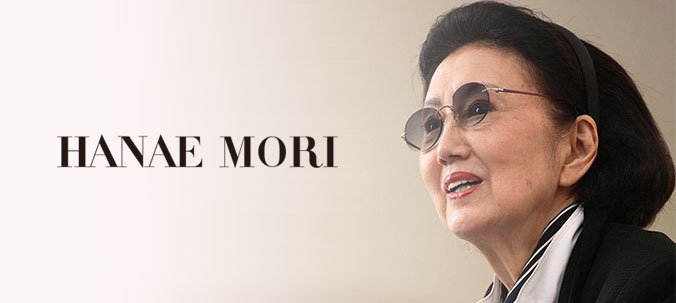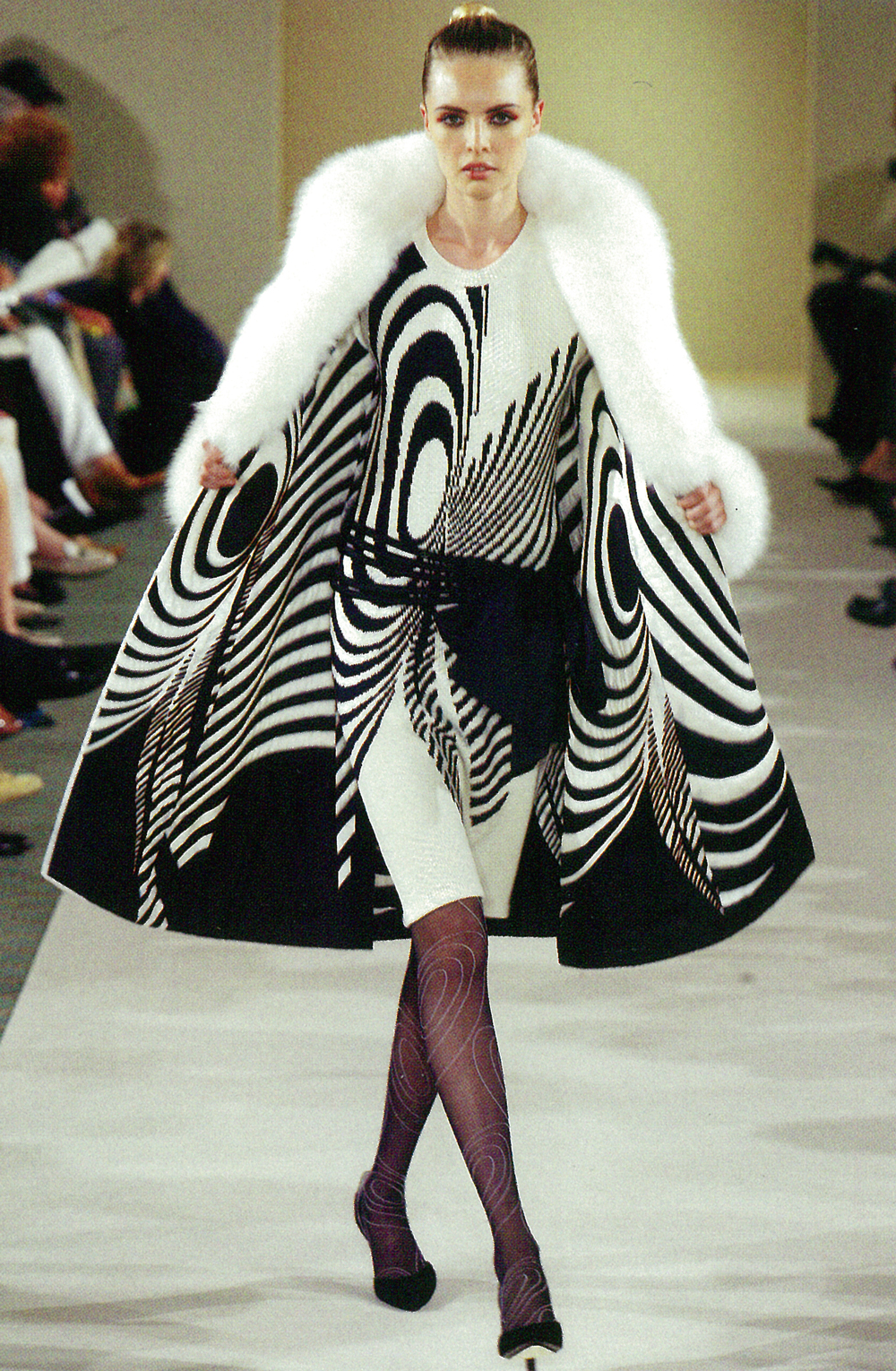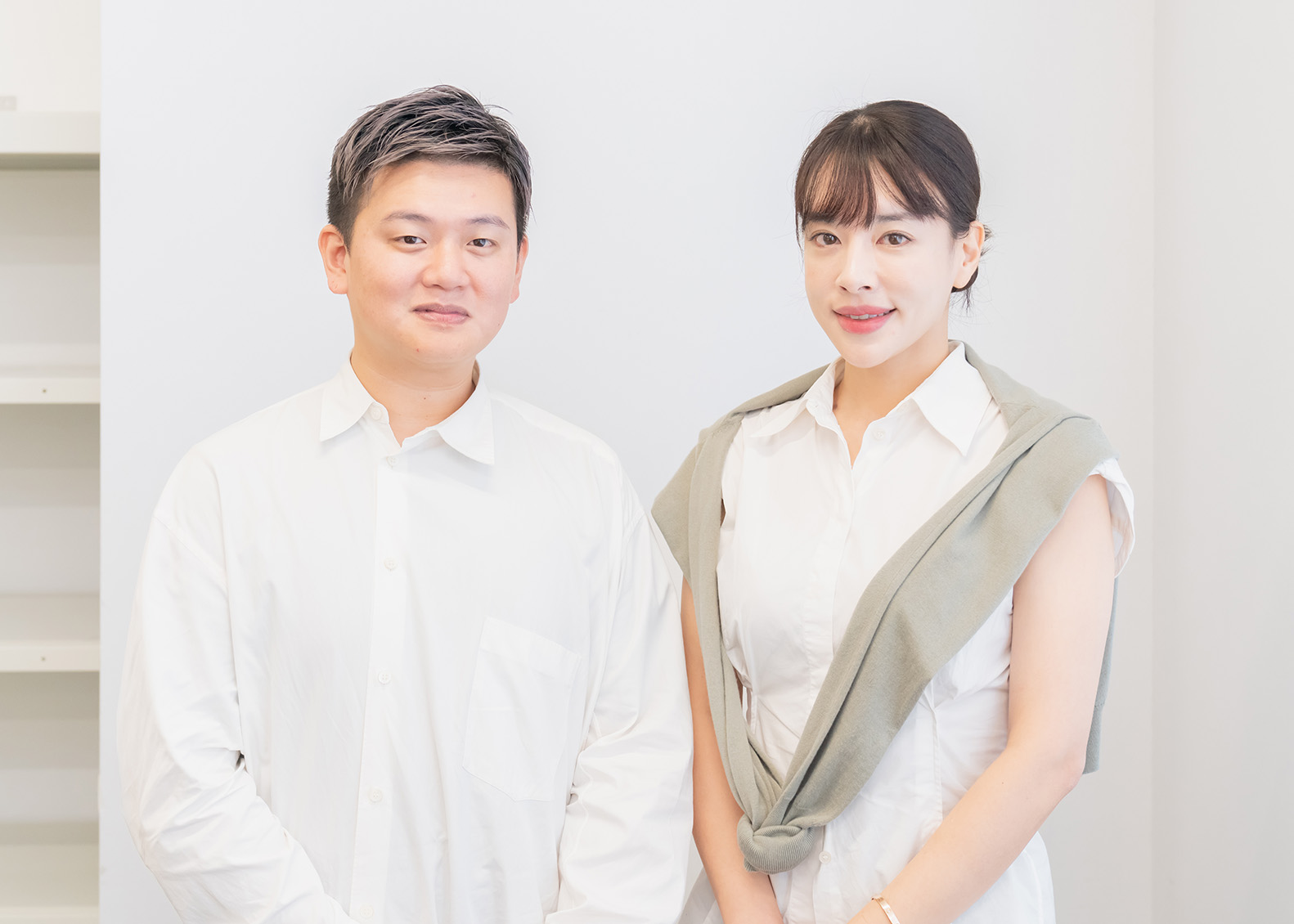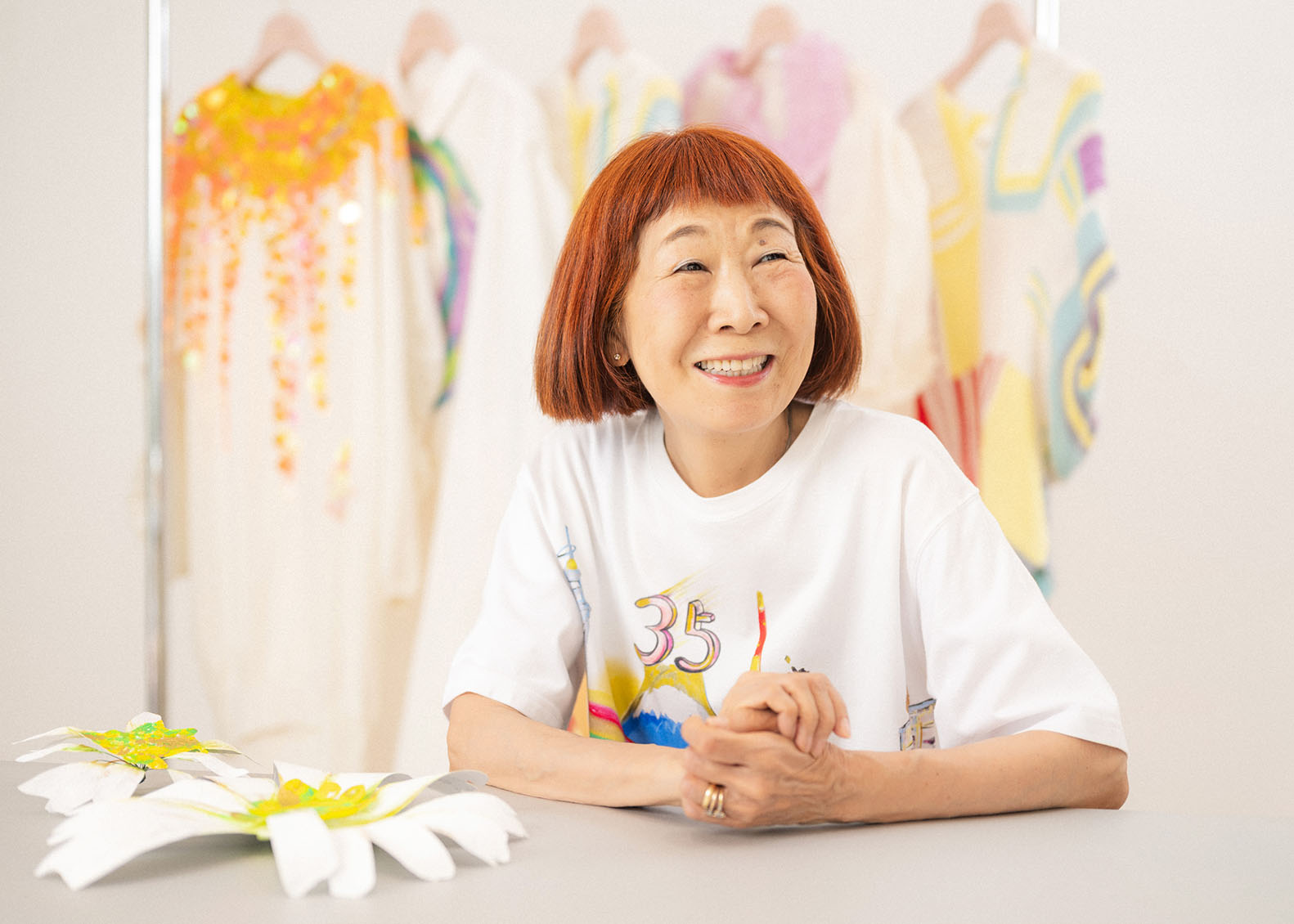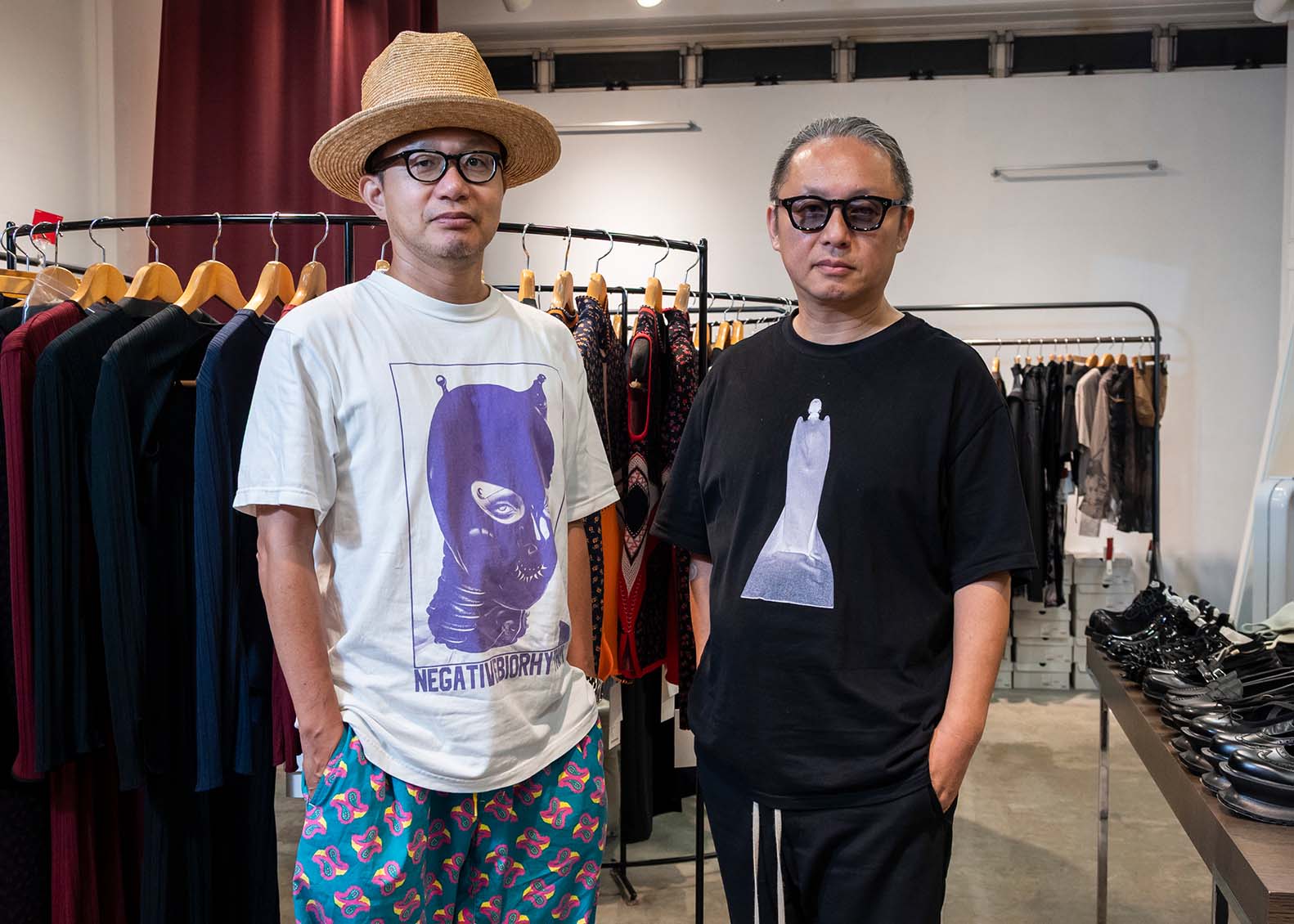Hanae Mori
Fashion episodes during your early childhood and school days
I am from Muikaichi in Shimane Prefecture. My father was a doctor, and he ordered clothes for my sister and me from the Mitsukoshi department store in Tokyo and the Takashimaya department store in Osaka by mail. I remember being embarrassed because the clothes were too stylish.
What made you decide to pursue a career in fashion?
I got married soon after graduating from university. I attended Dressmaker Women’s Academy[i1] (Doreme) because I wanted to make pretty clothes for my children and myself to wear. The more I studied, the more enjoyable it became for me to dress people, and in 1951, I opened a studio in Shinjuku.
When you look back at your life as a designer, what was the turning point for you?
I was blessed with the opportunities to work on the wardrobes for several hundred Japanese movies. I think I was trained by the master directors.
In January of 1961, I took a break and went to Paris, where I gathered information about collections for a newspaper company. Coco Chanel was still alive and well, and I became her first Asian haute couture customer, and had a suit made at Chanel. Through the fittings, I learned about the haute couture clothes-making system.
In New York, where I visited the summer of the same year, I felt strongly aware of my roots as a “Japanese person.” Cheap Japanese products sold in the basements of department stores. The depiction of Madame Butterfly in the opera “Madame Butterfly” which I saw in New York. “This is not Japan!” – I decided to try my luck with creations that were made in Japan.
I spent a few years studying “Japanese aesthetics,” and in 1965, I presented my first HANAE MORI collection in New York. This show, which was my first international show, was a huge success, and I continued to work in the United States for the next decade.
In 1975, I was invited by Princess Grace of Monaco to do a fashion show, and so I went to Monaco. I exhibited my work in Paris on my way back, and this lead me to want to work in Paris. In 1977, I opened a fashion house in Paris, joined an haute couture association, and became the only Asian couturier.
How did you decide on the butterfly as your brand icon, and what are your feelings with regards to the butterfly?
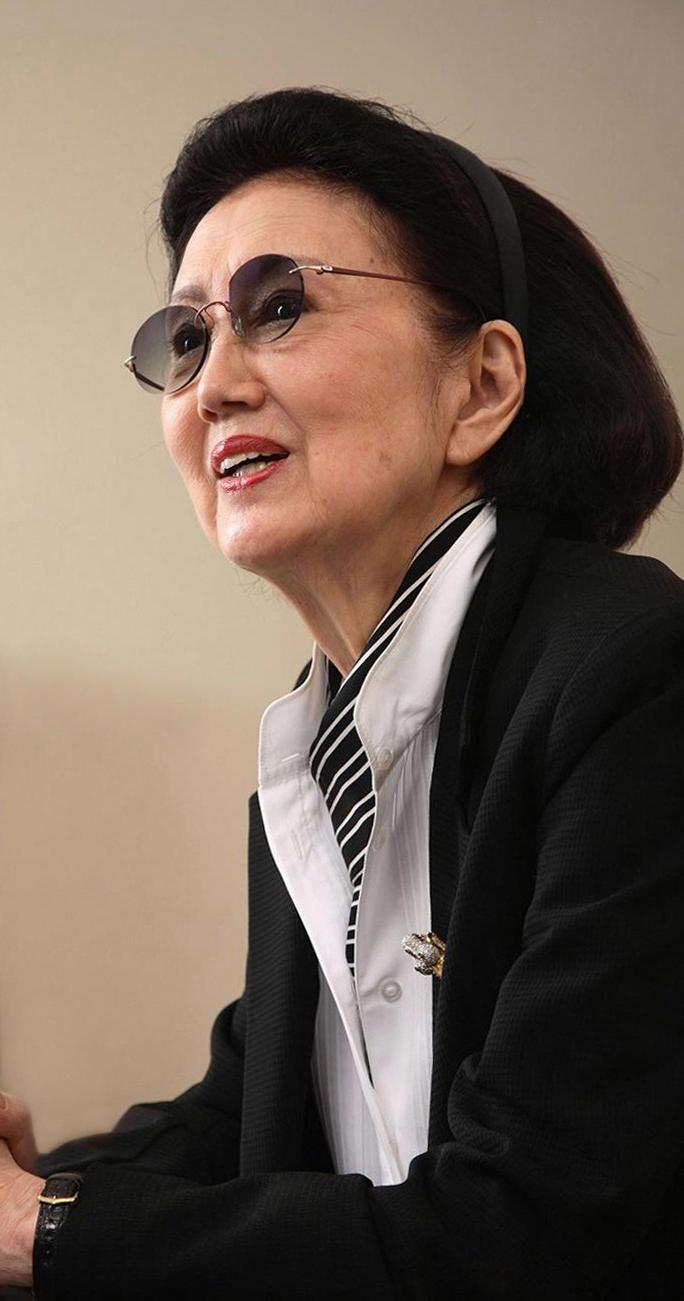
The butterfly is a symbol of hope which announces the arrival of spring.
Also, “Madame Butterfly,” which I saw in New York.
I chose the butterfly, symbolizing the Japanese woman spreading her wings around the world, as my theme.
What is the source of inspiration for your designs?
I get inspiration from my daily life.I was always curious about everything.
What are your expectations for Yu Amatsu, the designer for “HANAE MORI designed by Yu Amatsu”?
I have always emphasized the importance of “creating by hand” to the younger generation, so I hope that he will make the most of his “human power” and dress people in an attractive manner.
What do you want to “pass on to the future”?
“Creating by hand,” which is what I pursued in haute couture.
I want to convey the aesthetic sense of us Japanese people.
Lastly, do you have a message for the female fans of “Hanae Mori” in the world?
Always be beautiful and captivate men
Established her studio. Was in charge of wardrobe design for many movies during the golden age of Japanese movies.
1965
Presented her first overseas collection in New York, which was highly acclaimed as an example of “EAST MEETS WEST.”
1977
Opened a fashion house in Paris. Conducted international activities as the only Asian person belonging to an haute couture association. Her achievements as a pioneer of the Japanese fashion world were highly acclaimed as an international “ambassador of beauty.”
Currently, her activities are centered on the theme of “creation by hand,” such as holding costume exhibitions and training young designers, etc.
She has received numerous awards, including the “Asahi Prize,” “Medal with Purple Ribbon,” “Order of Cultural Merit,” and “Officier de la Légion d'honneur,” etc.

